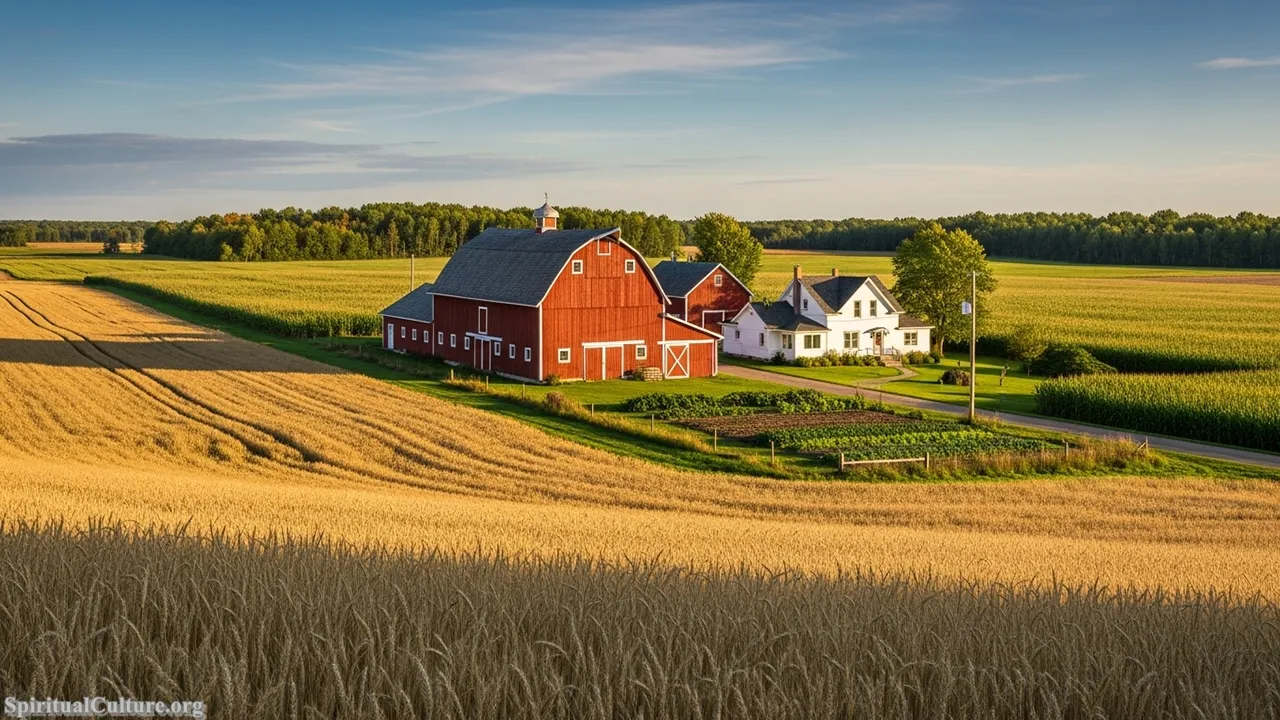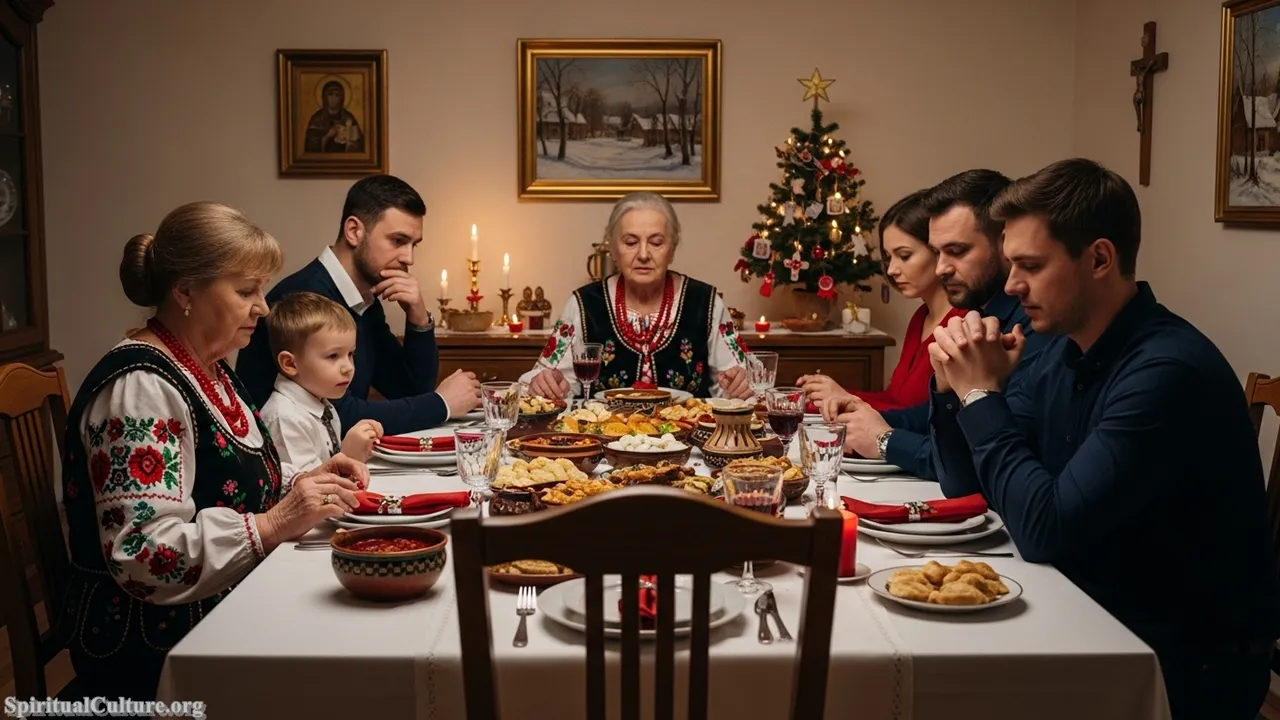Canada, often celebrated as the world’s first officially multicultural nation, presents a complex and vibrant tapestry woven from countless traditions. This cultural mosaic, as it is commonly known, is defined by the coexistence of Indigenous nations, the foundational European colonizers, and successive waves of global immigration.
At Spiritual Culture, we look beyond simple demographics to rank the cultural groups whose historical longevity, spiritual depth, and foundational societal influence have been most profound as of the Current Time of Writing, November 2025. This ranking is not a measure of current population size alone, but a reflection of the enduring spiritual frameworks, heritage contributions, and deep-seated societal structures they have instilled in the Canadian identity.
The journey through these top ten cultures illuminates Canada’s core values: a constitutional commitment to religious freedom, the ongoing process of reconciliation with its original inhabitants, and a progressive embrace of global diversity. Understanding these influences is key to appreciating the national character and the spiritual evolution of the country.
Table of the Top 10 Most Influential Cultures in Canada by Spiritual and Historical Impact
| Rank | Culture/Origin Group | Primary Spiritual/Heritage Impact | Historical Influence Score (Out of 10) |
|---|---|---|---|
| 1 | Indigenous Peoples (First Nations, Inuit, Métis) | Original custodianship, land-based spirituality, foundational governance concepts, reconciliation focus. | 10.0 |
| 2 | French/Francophone Culture | Establishment of New France, Catholicism’s historical stronghold, official bilingualism, Quebec sovereignty. | 9.5 |
| 3 | British/Anglophone Culture | Parliamentary democracy (Westminster System), common law, constitutional monarchy, Protestantism’s historical role. | 9.3 |
| 4 | Ukrainian Culture | Settlement of the Prairies, Eastern Orthodoxy, significant agricultural and political contributions, cultural preservation (e.g., in Alberta, Manitoba). | 8.0 |
| 5 | Irish Culture | Mid-19th Century immigration (Famine), Catholic influence outside of Quebec, shaping major cities (e.g., Montreal, Toronto), labour history. | 7.8 |
| 6 | German Culture | Early settlement (especially in Ontario/Nova Scotia), Mennonite and Hutterite communities (Anabaptist influence), agricultural development. | 7.5 |
| 7 | Chinese Culture | Foundational railway labour, challenging of discriminatory laws (Head Tax), development of major urban centres (Chinatowns), shaping modern multiculturalism. | 7.0 |
| 8 | Italian Culture | Post-WWII urban development, strong Catholic community influence in major cities, culinary and linguistic enrichment. | 6.8 |
| 9 | South Asian (Sikh/Hindu) Culture | Early 20th-century immigration, establishment of Sikhism as a significant religious presence (2nd largest Sikh pop. globally), political and economic contribution. | 6.5 |
| 10 | Polish Culture | Post-WWI/WWII immigration, significant contribution to the arts/sciences, strong Catholic and Eastern European heritage presence in urban areas and the Prairies. | 6.0 |
#1. Indigenous Peoples (First Nations, Inuit, Métis)
The cultures of the First Nations, Inuit, and Métis peoples are the original and deepest taproots of the land now called Canada, holding an unparalleled historical and spiritual influence. As of the Current Time of Writing, the ongoing process of truth and reconciliation with these distinct nations is a defining moral and political imperative for the entire country. Their traditions predate European contact by millennia, laying the foundational concepts of connection to the land, sustainability, and relational ethics that are increasingly critical to the modern Canadian ethos.

The spiritual impact of Indigenous cultures is centred on an animistic and relational worldview, viewing the land (“the Creator,” “all our relations”) not as property but as a sacred relative and source of being. This deep ecological spirituality directly challenges the colonial paradigm, offering essential lessons in holistic wellness and environmental stewardship. Their resilience in the face of forced assimilation, including the trauma of residential schools, validates their number one ranking, representing a living heritage that is both foundational to the territory and crucial for Canada’s moral future.
The preservation of Indigenous languages, oral histories, and ceremonial practices—often conducted in secret for generations—is a powerful testament to the enduring human spirit. The moral lesson for all Canadians is the profound need to listen, respect, and actively uphold the inherent rights and spiritual sovereignty of the original inhabitants, transforming historical injustice into a pathway for true national unity and shared spiritual space.
Cultural/Spiritual Highlights
- Original concept of Kanata (village/settlement) is the etymological root of Canada’s name.
- Spiritual practices are deeply integrated with the land and natural cycles (land-based spirituality).
- Their rights and heritage are recognized and affirmed under the Constitution Act, 1982.
- Influence on Canadian governance is growing through traditional knowledge systems and self-determination efforts.
#2. French/Francophone Culture
French culture, established in the 17th century with the founding of New France, represents one of the two foundational European pillars of the Canadian state, maintaining its vitality most strongly in Quebec but with significant communities across the nation. The constitutional guarantee of official bilingualism and the deeply entrenched legal and educational systems in Quebec ensure its continuous relevance. Its status as a foundational culture means its influence is baked into the very political and legal framework of Canada.

The spiritual impact is historically tied to the Catholic faith, which played a central and powerful role in the governance, education, and social fabric of Quebec for centuries—a period often referred to as the Great Darkness, yet one that forged a unique and cohesive identity. While Quebec underwent a “Quiet Revolution” to secularize in the mid-20th century, the cultural memory, values, and institutions shaped by this faith remain profound. The drive to preserve the French language in a predominantly Anglophone continent is itself a powerful spiritual commitment to heritage.
The constant negotiation between Francophone identity and the larger Canadian framework reflects a core value of protecting linguistic and cultural uniqueness against powerful external forces. This commitment provides a moral reflection on the importance of cultural sovereignty and the right of distinct peoples to flourish within a larger political entity, making it an inescapable part of the Canadian spiritual and political dialogue.
Cultural/Spiritual Highlights
- The French Civil Law tradition significantly shapes the legal system in Quebec.
- Historical Catholic influence shaped educational and healthcare institutions across Canada.
- Official status of French ensures its continued political and cultural prominence.
- The Régime seigneurial (seigneurial system) influenced early land development and social structure.
#3. British/Anglophone Culture
British culture, through the waves of English, Scottish, and Welsh settlement, established the second, and ultimately dominant, European political and legal framework in Canada. The British conquest of New France and the later arrival of the United Empire Loyalists cemented an Anglophone majority and political structure that remains the backbone of the Canadian state as of the Current Time of Writing. The country’s Head of State, parliamentary structure (Westminster System), and common law are direct inheritances of this culture.

The spiritual impact is rooted in Protestant Christianity (Anglicanism, Presbyterianism, Methodism, etc.), which historically dominated public institutions and societal values, particularly in English Canada. This tradition instilled concepts of liberal democracy, the rule of law, and a more reserved, often pragmatic, national character. While Canada is now highly secularized and pluralistic, the institutional foundation—from the structure of government to the concept of charitable works—bears the indelible mark of British Protestant ethics and governance.
The reflection provided by this foundational culture is the historical tension between order and identity, where a strong, inherited institutional framework must constantly adapt to a unique, increasingly diverse, and self-determining Canadian identity. Its preservation value lies in maintaining the democratic and judicial principles that provide the framework for the country’s modern pluralism, emphasizing gradual evolution over revolution.
Cultural/Spiritual Highlights
- The foundation of the Canadian Common Law system (excluding Quebec).
- The establishment of the Westminster-style Parliamentary democracy.
- The constitutional monarchy and role of the Crown in Canada.
- Historical dominance of Protestant denominations in shaping public education and social norms.
#4. Ukrainian Culture
Ukrainian culture secured its place in Canada’s foundational narrative through the mass settlement of the Prairies in the late 19th and early 20th centuries, transforming vast tracts of undeveloped land into Canada’s agricultural heartland. Their arrival, often seeking religious freedom and economic opportunity, provided the necessary human capital to fulfill Canada’s vision of a settled West. As of the Current Time of Writing, the descendants of these pioneers maintain one of the largest and most well-preserved cultural footprints outside of the foundational European groups.

The spiritual impact is profound, largely centred on Eastern Orthodoxy and the Ukrainian Catholic Church (Eastern Rite Catholicism), which anchored community life in the isolated settlements. These religious traditions preserved language, celebrated intricate traditions (such as Pysanka—Easter eggs, and complex Christmas customs), and provided a spiritual refuge from assimilation pressures. Their deep commitment to faith and land cultivation provides a powerful spiritual narrative of perseverance and establishing a spiritual home in a new, often harsh, environment.
The story of Ukrainian Canadians reflects the strength of cultural integrity and community organization in the face of adversity. Their contribution underscores the moral lesson that the true wealth of a nation lies in the resilience and cultural capital of its people, and their preservation of traditions continues to enrich Canada’s heritage, particularly across the Prairie provinces.
Cultural/Spiritual Highlights
- Played a crucial role in developing Canada’s Prairies into a major agricultural area.
- The Ukrainian Catholic and Orthodox Churches remain major religious institutions in Canada.
- Preservation of Eastern European arts, music, and folk traditions (e.g., in Alberta and Manitoba).
- Contributed to the political fabric of Prairie provincial governance.
#5. Irish Culture
The mass influx of Irish immigrants, particularly during the Great Famine in the mid-19th century, profoundly shaped the demographics and labour force of British North America, especially in cities like Montreal, Toronto, and Halifax. Though often entering Canada under tragic circumstances, their numbers and immediate integration into the working class gave them a high degree of cultural leverage in the rapidly urbanizing environment. Their influence is subtly woven into the fabric of urban Canadian history.

Spiritually, the Irish contribution was crucial in establishing the visibility and size of the Catholic community outside of Quebec, challenging the established Protestant dominance in English Canada. This community’s growth was a critical factor in the eventual shift towards a more pluralistic religious environment. The emphasis on close-knit community, political activism, and a vibrant cultural expression (music, storytelling) became a key spiritual counterpoint to the more reserved British ethos.
The Irish experience in Canada teaches a powerful lesson about resilience, migration, and the capacity for an immigrant group to rise from desperate beginnings to become a core cultural component. Their preservation value lies in the humanistic legacy of overcoming hardship through faith and community solidarity, a narrative that resonates deeply with all subsequent immigrant groups.
Cultural/Spiritual Highlights
- A major factor in the growth and strength of the Catholic church in English Canada.
- Significantly shaped the cultural and political life of early Canadian cities (e.g., St. Patrick’s Day celebrations).
- Contributed to the development of labour movements and urban infrastructure.
- Known for a strong tradition of storytelling and folk music preserved through oral history.
#6. German Culture
German-speaking immigrants have arrived in Canada in distinct waves since the 18th century, making it one of the longest-standing non-Founding European cultures. Early settlements in Nova Scotia and Upper Canada (Ontario) provided agricultural stability, while later waves were vital to settling the West. This historical depth and geographic breadth across the country ensures their enduring, though often quietly integrated, influence in Canadian life, particularly in sectors related to agriculture and manufacturing.

The spiritual influence is uniquely diverse, encompassing not only mainstream Protestantism and Catholicism but also the formation of distinct Anabaptist communities like the Mennonites and Hutterites, primarily in Ontario and the Prairies. These groups have had a specific spiritual impact, modelling pacifism, self-sufficiency, communal living, and deep religious devotion, often maintaining their traditions and German dialects against outside pressure. Their enduring presence offers a study in spiritual adherence and cultural insularity.
The moral lesson from German-Canadian culture is the value of diligence, discipline, and the quiet strength of community. Their preservation value lies in the continued existence of communities dedicated to alternative, faith-based lifestyles, which enrich the national conversation about spiritual freedom and the balance between tradition and modernity in a secular state.
Cultural/Spiritual Highlights
- Mennonite and Hutterite communities reflect unique, centuries-old spiritual and communal lifestyles.
- Long history of agricultural expertise, particularly in Ontario and the Prairies.
- Contributed significantly to science, industry, and the arts in post-war Canada.
- Often well-integrated, their influence is broad and spans multiple waves of immigration.
#7. Chinese Culture
Chinese culture holds an influential position not just through its current demographic size, but through the transformative historical impact of its initial arrival and the subsequent fight for civil rights. The foundational work of Chinese laborers on the Canadian Pacific Railway was a necessary, though tragically exploited, act in linking the country coast-to-coast. Their subsequent establishment of vibrant Chinatowns in Vancouver and Toronto created cultural and economic hubs that shaped the multicultural character of those cities.

The spiritual and moral impact stems from the decades of discriminatory legislation, such as the Head Tax and the Chinese Exclusion Act, which galvanized the push for a genuinely inclusive society. This struggle for dignity and recognition is a key spiritual narrative in Canadian history, providing a profound moral framework for combating systemic racism. Their cultural heritage, including Confucian values of respect and community, and the introduction of complex culinary and artistic traditions, has indelibly enriched the Canadian spiritual and aesthetic landscape.
The celebration of Chinese festivals (e.g., Lunar New Year) in major Canadian cities exemplifies this community’s success in preserving its heritage while contributing to the national mosaic. The preservation value lies in the living monument of the Chinatowns—spaces born of necessity and discrimination that are now celebrated as heritage sites, symbolizing the victory of resilience and cultural endurance.
Cultural/Spiritual Highlights
- The labour of Chinese immigrants was integral to the completion of the Canadian Pacific Railway (CPR).
- The fight against the Head Tax and Exclusion Act laid a moral foundation for modern multiculturalism.
- Vibrant Chinatowns are major cultural and spiritual hubs in cities across the country.
- Cultural concepts like filial piety continue to shape intergenerational relations within the community.
#8. Italian Culture
Italian culture’s major influx occurred in the decades following World War II, fundamentally changing the cultural landscape of Canada’s largest urban centres, particularly Toronto and Montreal. This group quickly established strong, cohesive communities, creating neighbourhoods like Little Italy that became models of post-war immigrant integration and cultural pride. Their influence is highly visible in modern Canada, from culinary arts and architecture to business and politics.

The spiritual impact is closely linked to a strong, community-centred Roman Catholic faith, which reinvigorated the church in many urban areas after the war. Beyond official religion, Italian culture instilled a powerful spiritual value in familial bonds, the importance of tradition, and the celebratory nature of community life. This emphasis on family and the public expression of life’s joys (food, festivals) provided a humanistic warmth that balanced the more stoic British-Canadian ethos.
The reflection offered by the Italian-Canadian experience is the seamless fusion of deep traditionalism with rapid economic progress. Their preservation value is found in the continued commitment to their language and heritage, proving that deep cultural roots can thrive and enrich the adopted land without requiring an entire geographic region (like Quebec) for their survival.
Cultural/Spiritual Highlights
- Major post-WWII contribution to the growth and development of major Canadian cities.
- Strong influence on Canadian culinary arts and urban neighbourhood structure.
- Deep Catholic faith provided a cornerstone for community cohesion and identity.
- Cultural emphasis on family and tradition remains highly influential.
#9. South Asian (Sikh/Hindu) Culture
South Asian culture, primarily encompassing the traditions of India, Pakistan, Sri Lanka, and Bangladesh, has had a long and increasingly powerful presence. Early Sikh settlers arrived in British Columbia in the late 19th and early 20th centuries, facing significant racial and immigration barriers. Subsequent waves, particularly after the liberalizing of immigration laws in the 1960s, have established South Asians as one of the fastest-growing and most politically/economically influential communities in Canada as of the Current Time of Writing.

The spiritual impact is immense, introducing major world religions, primarily Sikhism and Hinduism, into the Canadian mosaic on a large scale. Canada is home to the second-largest national Sikh population globally, making the Gurdwara a prominent feature of the urban landscape. This presence challenges Canada to truly live up to its constitutional commitment to religious freedom and pluralism. The cultural emphasis on seva (selfless service) in Sikhism and the complex philosophical and devotional traditions of Hinduism have enriched Canada’s spiritual discourse.
The moral lesson of this culture’s rise is the transformative power of dedication and merit, often overcoming historical injustices. Their preservation value lies in the successful establishment of non-Abrahamic religious institutions and their cultural visibility, demonstrating Canada’s capacity to host a truly global array of spiritual traditions.
Cultural/Spiritual Highlights
- Canada hosts the second-largest national Sikh population in the world.
- Sikh values of seva (selfless service) and equality are prominent in Canadian public life.
- The establishment of Gurdwaras and Hindu temples has diversified the religious landscape.
- Significantly contributed to business, technology, and political leadership.
#10. Polish Culture
Polish culture has exerted a quiet but consistent influence across Canada, with major waves of immigration arriving to settle both the Prairies and industrial cities, often fleeing political and economic turmoil. Their presence spans centuries, integrating into the Canadian military, academic, and arts scenes. Though often overshadowed by larger groups, their contributions to Canadian art, science, and the spiritual life of the nation are significant and enduring.

The spiritual impact is primarily rooted in deep Roman Catholic devotion, providing significant strength to the church in Canada. Polish parishes often became vital centres for cultural preservation, maintaining the language and celebrating traditional religious holidays, such as Christmas Eve (Wigilia) and Easter rituals. Their contribution reinforces the Eastern European spiritual flavour, alongside Ukrainian culture, across the Canadian Midwest and urban centres.
The value offered by the Polish-Canadian experience is the deep connection between national identity, faith, and political freedom. Their history of resistance to foreign powers instils a powerful moral lesson about the importance of democratic and humanistic values. Their preservation of folk arts and language ensures a rich vein of European heritage remains active in the Canadian mosaic.
Cultural/Spiritual Highlights
- Major contributor to the Catholic faith tradition in many Canadian urban centres.
- Many Polish immigrants were key in settling the Western Prairies and industrial areas.
- Maintained strong cultural ties through dedicated parishes and community organizations.
- A history of political resistance provides a moral foundation for democratic values in Canada.
Conclusion
The ranking of Canada’s most influential cultures reveals a nation built upon layers of spiritual and historical contribution. The profound, land-based spirituality of the Indigenous Peoples provides the moral compass, while the institutional frameworks laid by the French and British cultures establish the political boundaries. The vibrancy and resilience demonstrated by all subsequent immigrant groups—from the pioneers of the Prairies to the new voices of the global South—validate Canada’s ongoing experiment in multiculturalism. As of the Current Time of Writing, Canada’s true spiritual genius lies not in a single dominant heritage, but in its commitment to honouring the diverse, living legacies of all its peoples. This commitment to inclusion is the defining heritage of Spiritual Culture in Canada.




